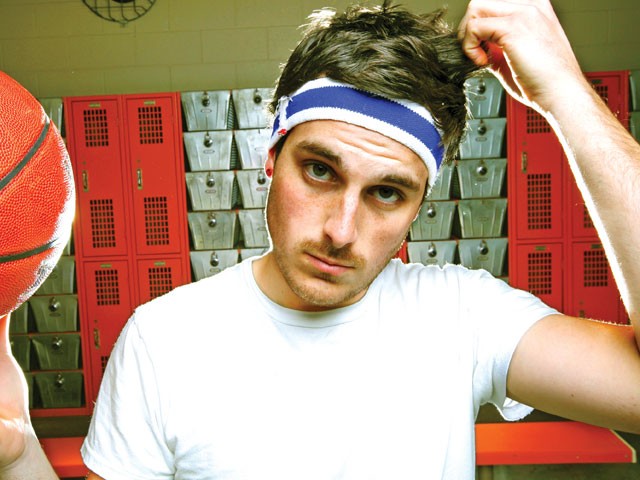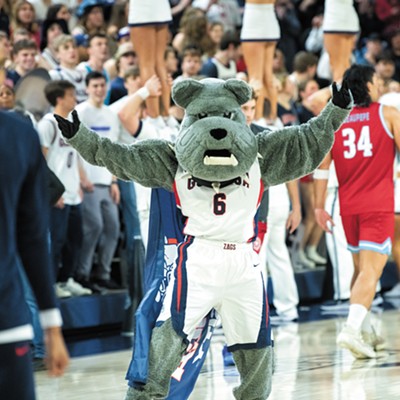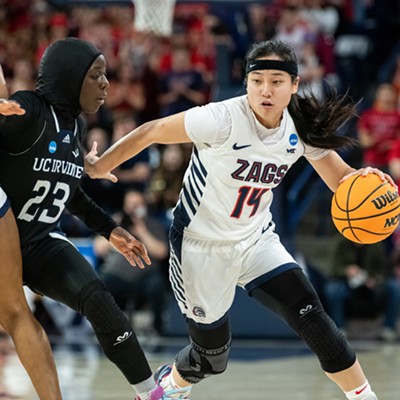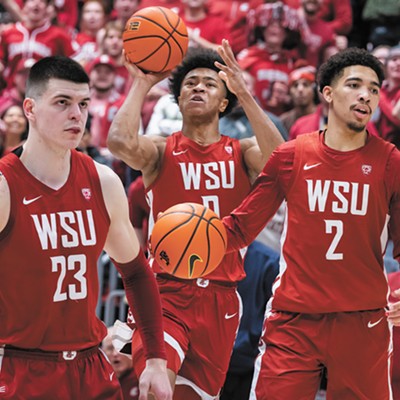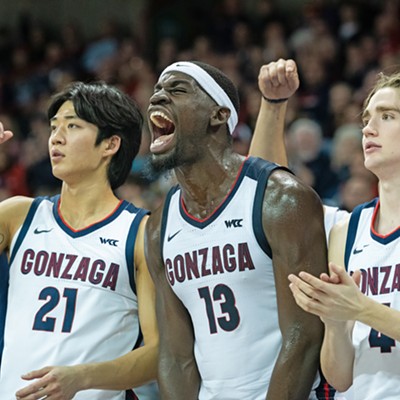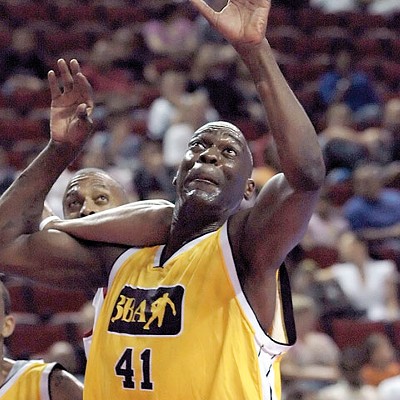Nobody likes court monitors. You came to Hoopfest to have fun — you don’t want some guy with a whistle imposing rules and judgments on you.
But you know that team with the point guard who’s always grabbing your jersey and the big guy who enjoys elbowing you in the face? Imagine playing them with nobody to mediate or keep time or decide whether the shooter’s foot was on the 2-point line.
Suddenly the idea of having court monitors doesn’t seem so bad.
Those guys who stand out in the sun for 12 hours on Saturday and then come back and do it all over again on Sunday? They’re not getting paid. Oh, sure, they get some swag — shoes, a hat, a pair of shorts. (And a T-shirt that says “Court Monitor.” You really wanna wear that around town all year?) The swag’s total retail value? About minimum wage, when you consider all the hours they put in.
Who are these people who volunteer to stand and sweat in the sun for an entire weekend?
Some spend their winters as high school and college basketball referees; some have no refereeing experience at all. Pete Johnson, who oversees court marshals for Hoopfest, says he recruits monitors “like the youth pastor from my church. 18-year-old kids who’ve played for years, watched the monitors, now they want to be one. I’ve got moms and dads doing it — people from all walks of life are court monitors.”
There are layers of redundancy in the Hoopfest court monitoring structure. There are monitors for each of the nearly 450 courts, along with court marshals (who oversee a half-dozen courts), roving marshals (who oversee a couple of dozen courts) and area administrators (four of them, each in radio contact with personnel on well over a hundred courts).
Johnson — he’s “a trial lawyer, mostly civil litigation,” so you know he’s up on the rules — conducts the training sessions for both experienced and first-time court monitors at Hoopfest. “They go through a two-hour training session — no exceptions,” Johnson says. “We cover everything from how to fill out a bracket sheet to how to conduct yourself on the court, and how to keep control.”
This last part is especially important, as we all know that, with streetball, emotions can run a little high. “But when parents step over the line and say something they shouldn’t,” Johnson says, “they almost always apologize right away.”
And he denies the claim that more tempers flare in the summer heat: “I can honestly say that in my eight years as an area administrator, I have not noticed any more altercations when it gets hot,” he says.
“In fact, the hotter it gets, it’s less intense, because the players get fatigued.”
Here’s one of the best tributes to how well-organized the world’s largest 3-on-3 tournament is: Last summer, the Los Angeles Lakers hired Hoopfest to put on a “big” streetball tournament right next to the Staples Center: 500 teams, 30 courts.
Hoopfest personnel are going back to L.A. again this August to administer the second year of “3-on-3 at L.A. Live,” which expects to double in size.
You mean all the way to 1,000 teams? How can downtown L.A. possibly find room?
Here in little ol’ downtown Spokane, they handle seven times that many.

